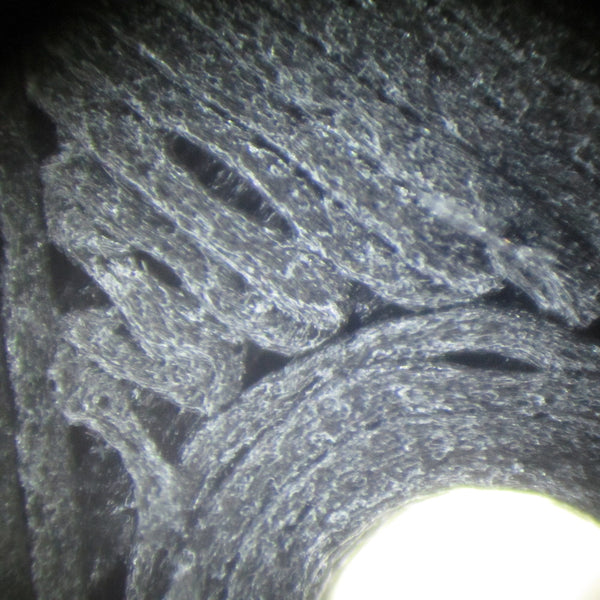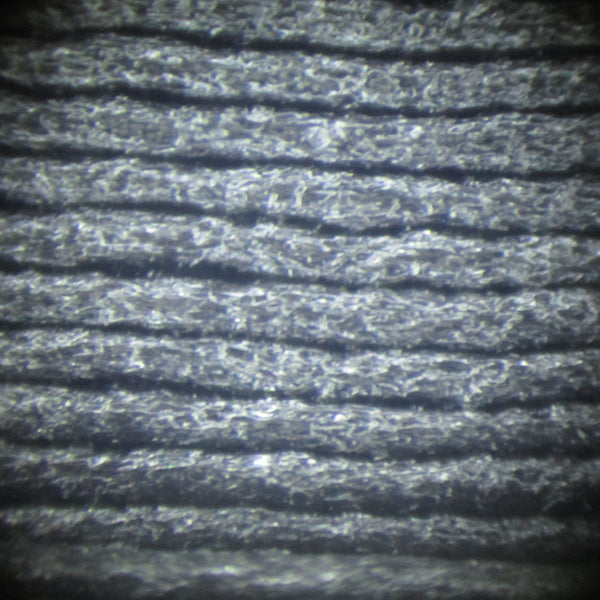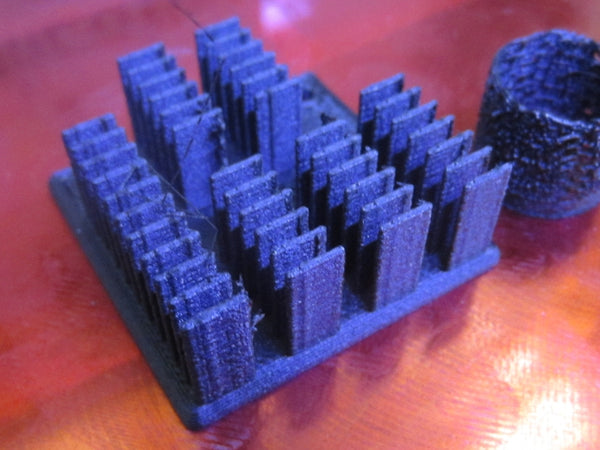Recently, ProtoPlant Inc. launched a Kickstarter campaign to produce a variety of interesting filament - a Carbon Fiber PLA, a High Temperature PLA, and a Polycarbonate ABS. We contacted the ProtoPlant team and they kindly agreed to provide us some samples for testing. Our FedEx driver dropped off a box of a professionally packaged sample kit with material information, test data and some sample quantities of filament.
What follows is a first look at their Carbon Fiber PLA, with anecdotal data - not a strict scientific test.
This PLA is infused with 15% by weight of chopped carbon fiber from Toho Tenax, an additive used to strengthen plastic parts. Owing to the non-smooth surface texture imparted by the carbon fibers, this plastic has a much more matte look than the usual glossy finish of regular PLA, (BTW, do read the general precautions about carbon fibers - it's not as nasty as fiberglass, but it can still irritate.)
For testing purposes, I used the heatsink design extracted from the MakerBot Stepstruder Mk7 design and sliced it with KISSlicer Pro, using 0.3 mm layer thickness, 100% infill. The prints were made on my MakerBot Replicator Dual with the whpthomas extruder upgrade, and a 0.4 mm MBI nozzle. The carbon fiber PLA datasheet suggested a printing temperature of 210ºC, but on our Replicator Dual, I found that we were getting poor material flow and adhesion at that temperature. Raising the temp to 235ºC resulted in a much more satisfactory print. (This is not unusual -- the Replicator generally seems to want a higher extruder setting than other printers.) For comparison, the same design was also printed with our standard Prototype Supply PLA (grey).
Both prints measured 6 grams on a kitchen sacle, although the CF PLA print felt lighter in my hand than the one made with the standard PLA,.
When I flexed the base of the prints (the heatsink "plate"), I noticed that the CF PLA concentrated the bending mostly where the forces were being applied. In comparison, the standard PLA distributed the bending force over much of the base. This is consistent with ProtoPasta's claim that the carbon fiber PLA is a much stiffer PLA than standard PLA. When flexing the thin "heatsink fins", the CF PLA fins stayed straighter until failure, and had a more audible snap as the fins broke. This is the classic tradeoff between being stiff and flexible.
Even if the fiber strand do not directly help with layer-to-layer fusion, the increased stiffness should help reduce delamination caused by torsional forces under load.
I expect the carbon fibers would provide increased thermal conductivity compared to standard PLA. Doing an informal skin contact test with the mock heat sinks, the CF PLA heatsink felt cooler over time compared to the standard PLA. This characteristic could make this plastic useful for making motor/gear mounts for mechanical applications. I suspect that it would be particularly useful for 3D printed RC cars.





